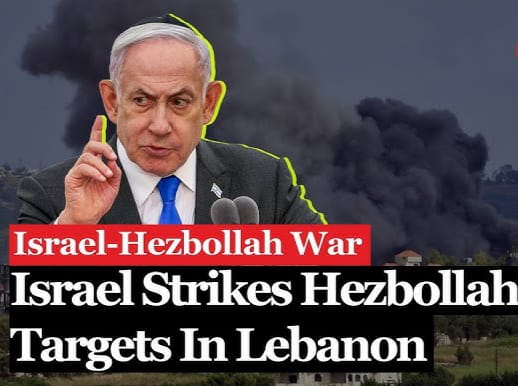
Escalation Along the Israel-Lebanon Border
The latest in a series of escalations between Israel and Lebanon marks one of the long-standing geopolitical flashpoints in the Middle East, with history marked by cycles of violence and tenuous ceasefires. The latest episode of violence comes against the backdrop of growing tensions in the region, especially concerning the Israeli-Palestinian conflict, drawing other regional players like Hezbollah, the Iran-backed militant group headquartered in southern Lebanon.
Skirmishes along the Israel-Lebanon border have lately been heightened as both sides continue exchanging artillery fire and accusations. The repeated firing of rockets from Hezbollah into northern Israel has led to retaliatory airstrikes from the IDF. Increasing involvement through Hezbollah, indeed coordinated with Palestinian factions in Gaza, is considered a significant reason behind the escalation. Israel views the growing strength of Hezbollah as a direct threat against its security, while Hezbollah clarifies that all its operations are just ways of defending Lebanon and the Palestinian cause.
Air Strike Attack: A Forceful Retort Israel Unleashes
In Lebanon, the Israeli airstrikes have focused on not only the Hezbollah positions but also critical infrastructure believed to be used by the group. The air raids form a greater military strategy aimed at discouraging Hezbollah from launching other attacks and preventing the spread of the group in southern Lebanon. In southern villages in Lebanon, the civilians are caught in the middle, and a humanitarian crisis threatens to worsen.
The Israeli air force has further increased its activities over Gaza which, previously, had come under severe strains with Palestinian militant groups; therefore, there have been massive aerial bombardments over the place. Israeli officials claim that such airstrikes are a must to remove military targets used by Hamas and other militant groups that have bombarded thousands of rockets into Israel’s territory. Such airstrikes have devastated buildings, tunnels, and command centers, greatly razing Gaza’s infrastructure. However, the critics blame Israel for using too much force, resulting in many civilian casualties, the destruction of homes, hospitals, and schools.
Hostages in Gaza: The New Chapter of Conflict
Of all the activities that are violent in nature, the greatest concern is the hostage situations carried out by militant factions in Gaza. It has been reported that several dozen Israeli civilians and soldiers have been taken captive and used as bargaining chips in dealing with other factions such as Hamas. Such hostages were often used during negotiations or prisoner exchange activities with the Israeli government.
The situation has brought a multi-dimensional layer to what otherwise would have been a volatile conflict. Officials in Israel publicly declared that they would do whatever necessary to recover these hostages, including launching targeted military operations. However, such operations are extremely difficult in the urban landscape of Gaza. Complications associated with holding hostages make military planning more complex because Israel is aiming at mitigating mass scale casualties when targeting militants.
Israel has made indirect negotiations common fare in the past in return for hostage release, mostly through the services of third parties as its mouthpieces. The process towards such negotiations, though, seems even murkier with the most recent wave of rising events. Human rights groups and international organizations are calling for the immediate release of all hostages and averring that detention over them constitutes a violation against international law.
International reactions and efforts at mediation
International community is increasingly concerned over the growing Israel and Lebanon violence, merged with ground attacks in Gaza. The world powers have demanded restraint and called upon both parties to return to the negotiating table. However, all their efforts to facilitate a meeting haven’t reaped any pragmatic fruit yet.
The UN Security Council took several emergency sessions on the matter but failed to reach a resolution on the cease-fire. In one way or another, conflicts are complex, and the divergent interests of its member states will also make it hard to come out with an effective resolution regarding the cease-fire. The Western powers, especially those under the United States, have asserted their unequivocal support for Israel’s right to defend itself, while others of more significant number-including Arab and Muslim-majority countries-have condemned Israel for the disproportionate use of force on the Palestinians.
Other regional actors, including Egypt and Qatar, have been secretly working to end the conflict by facilitating a hostage-release agreement and ceasefires. Such states often act as intermediaries between Hamas and Israel on the basis of their bilateral diplomatic relations.
The Humanitarian Crisis: Gaza Under Siege
The humanitarian situation in Gaza continues to deteriorate rapidly as the conflict lingers on. Airstrikes and rocket attacks have become nearly a daily practice; the shortages of essential supplies such as food, water, and medical aid are happening to civilians in Gaza. Hospitals are becoming overwhelmed with casualties, and most of them have been severely damaged by the fighting.
It remains to be seen if any of these factors will result in sufficient reductions in violence to permit humanitarian relief access into Gaza and out of it, past the Israeli and Egyptian blockade. International aid agencies have already sounded the alarm that a catastrophe will occur if the violence does not abate. Through repeated, failed attempts at establishing safe corridors for delivery of aid, military operations have continued.
Similar concerns are brewing in Lebanon, particularly in southern areas because the civilians witness operations of Hezbollah and retaliatory strikes by Israel. In fact, displacement has been one of the pertinent issues, with thousands of families leaving their houses in pursuit of safety.
The Road Ahead: Is There an End in Sight?
The current escalation between Israel, Lebanon, and Gaza is just another chapter in the war-torn history of the region, and both will not succumb to pressure since each has gone on record stating that it will not yield to the other. The situation on the ground is unbearable; adding to this is the hostages in Gaza, making the situation explosive and increases the scope of the conflict.
These are likely to continue at least to keep the broker efforts at a ceasefire and hostagetake-release talks going, but, more than ever, peace in this landscape seems very far away. Beyond the battlefield is a larger, thornier geopolitical environment, with powers like Iran backing Hezbollah and Hamas, and Israeli regional allies, ensuring that any resolution will need much more than immediate military victories.
This is to say that the international community, including world powers and regional players, will have to up their ante in terms of diplomatic efforts if they want to contain further escalation of this crisis. For now, the world holds its breath as it watches the violence increase and more civilians fall victims.




